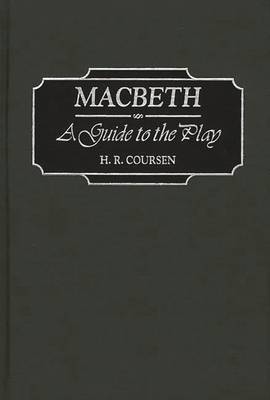
- Afhalen na 1 uur in een winkel met voorraad
- Gratis thuislevering in België vanaf € 30
- Ruim aanbod met 7 miljoen producten
- Afhalen na 1 uur in een winkel met voorraad
- Gratis thuislevering in België vanaf € 30
- Ruim aanbod met 7 miljoen producten
Omschrijving
Though written nearly 400 years ago, Shakespeare's Macbeth continues to capture the interest of modern audiences. Laden with political intrigue, supernatural elements, and complex psychological issues, Macbeth is a play of contemporary relevance, despite its tale of witches and ancient Scottish kings. While the play reflects seventeenth-century theological and political concerns, it also explores enduring themes, such as fate and free will, appearance and reality, order and disorder, ambition and obedience, and madness and sanity. Macbeth has been staged countless times, and it has also been produced for film and television. Numerous editions of the play exist, it is one of the most widely taught dramatic works, and scholars have written an enormous amount of criticism about it. This reference book is a comprehensive guide to the play.
The volume begins with a consideration of the play's textual history and a review of some of the most significant editions. The guide then examines important contexts and sources forI Macbeth, including Shakespeare's early work on Antony and Cleopatra, the Elizabethan story of bodily humors, Shakespeare's appropriation of material from Holinshed's Chronicles and Buchanan's History of Scotland, the significance of witchcraft, and the Gunpowder Plot. The book then presents a detailed examination of the dramatic structure of the play, along with a consideration of the play's most essential themes. A section on critical approaches summarizes how scholars have responded to the play. The volume then examines specific stage, film, and television productions of Macbeth and discusses the challenges of translating the text into performance. A selected bibliography concludes the work.
Specificaties
Betrokkenen
- Auteur(s):
- Uitgeverij:
Inhoud
- Aantal bladzijden:
- 224
- Taal:
- Engels
- Reeks:
Eigenschappen
- Productcode (EAN):
- 9780313300479
- Verschijningsdatum:
- 30/07/1997
- Uitvoering:
- Hardcover
- Formaat:
- Genaaid
- Afmetingen:
- 162 mm x 241 mm
- Gewicht:
- 498 g

Alleen bij Standaard Boekhandel
Beoordelingen
We publiceren alleen reviews die voldoen aan de voorwaarden voor reviews. Bekijk onze voorwaarden voor reviews.











